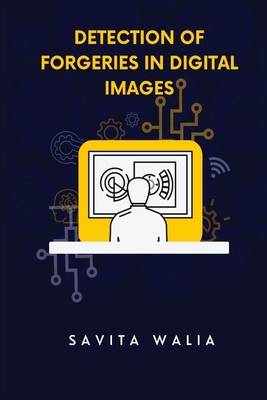
Detection of Forgeries in Digital Images
Description
The detection of forgeries in digital images is the process of identifying whether an image has been manipulated or altered in some way to create a false representation of reality. Digital image forgery is a widespread problem, as digital images can be easily manipulated using various software tools and techniques, such as cloning, copy-pasting, and retouching.
There are several approaches to detecting digital image forgeries, including both passive and active techniques. Passive techniques involve analyzing the image itself to detect inconsistencies, whereas active techniques involve embedding additional information into the image that can be used to verify its authenticity.
One passive technique used to detect digital image forgery is analyzing the statistical properties of the image, such as the distribution of pixel values and the presence of anomalies or inconsistencies. Another technique is analyzing the compression artifacts of an image, as manipulated areas may exhibit different compression artifacts compared to non-manipulated areas.
Active techniques involve embedding digital watermarks or digital signatures into the image. Digital watermarks are data that are embedded into the image that can be used to identify the origin and authenticity of the image. Digital signatures, on the other hand, are cryptographic methods that can be used to verify the authenticity of the image and detect any modifications.
Another active technique used to detect digital image forgery is steganalysis, which involves analyzing the image for the presence of hidden data, such as messages or images, that may have been inserted into the image during the manipulation process.
The detection of forgeries in digital images is a complex process that requires specialized software tools and techniques. By identifying manipulated images, it is possible to prevent the spread of false information and maintain the integrity of digital content.
The tendency to believe what we see rather than hear is human nature, and it applies not only in
real-life scenarios but also in the case of pictorial representations. So the visible content
becomes more critical for us than the verbal content. And hence we give so much importance to what
we see daily in newspapers, on the covers of magazines, news channels, social media like Facebook,
Instagram, Twitter, and many more. Among all the kinds of pictorial representations that we
have fabricated, nothing evokes more trust or a more substantial effect on our perception
than digital images. The first photograph was created in 1814 by Niepce, and just after a few
decades, photographs were being altered. Photo manipulation has been ever-existent since the
1860s .
These days, there scarcely exists any platform where digital images are not utilized. They are
utilized in every other field, in particular digital media, electronic media, military, law,
industry, crime scene investigations, science and innovation, clinical sciences, glamour
industry, online media, and so forth, all around the Internet. With such immense utilization of
images, the significance of their legitimacy has expanded massively. Because of their inescapable
use, digital images are the most generally altered digital media to distort their importance with
malignant purposes.
